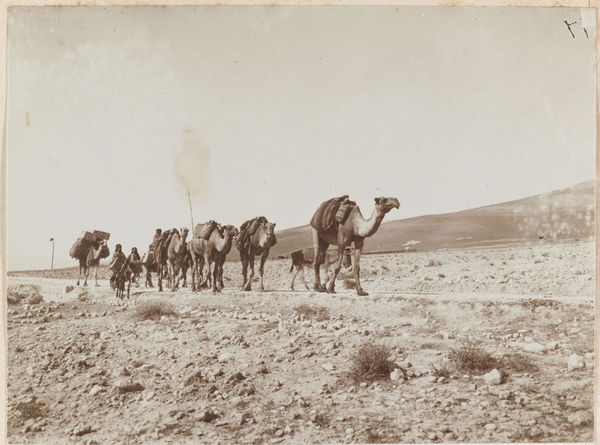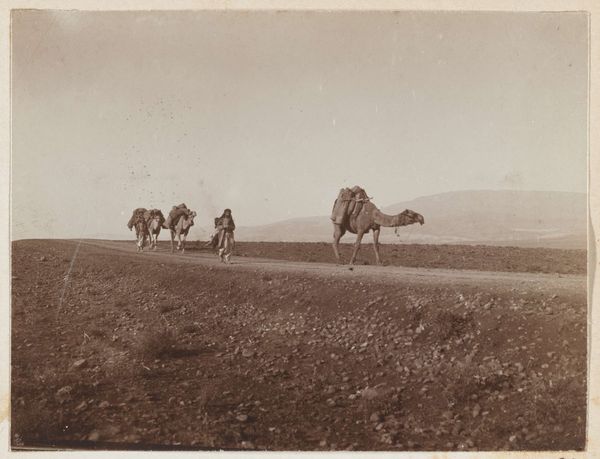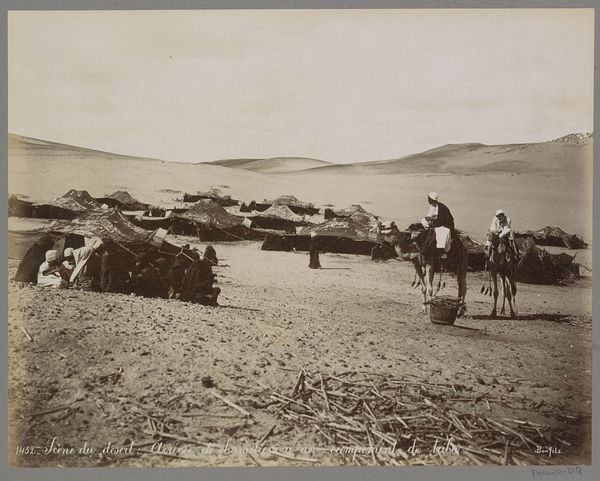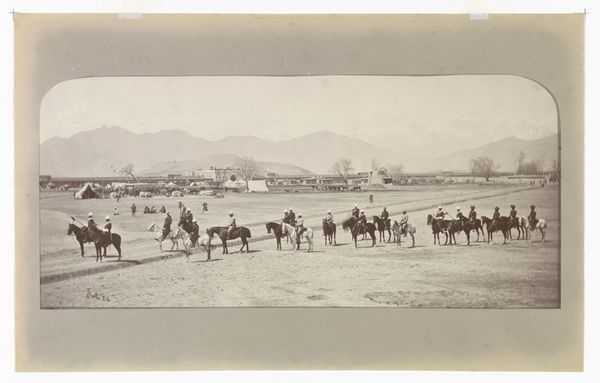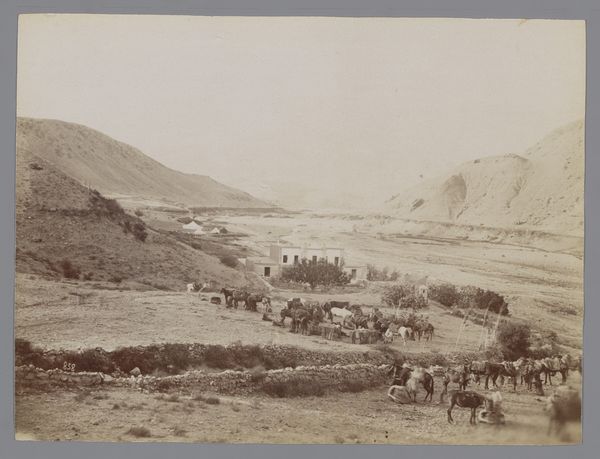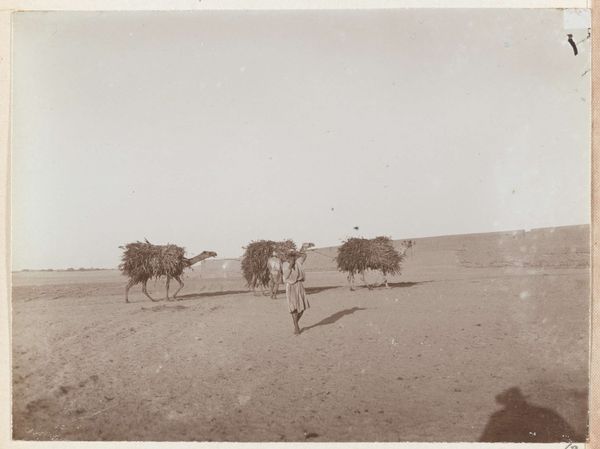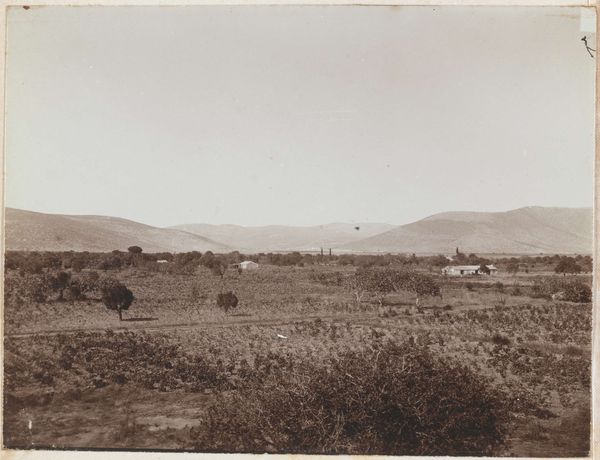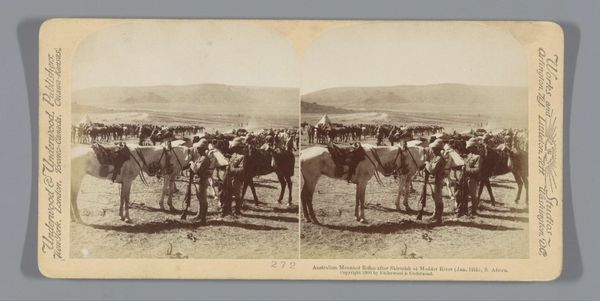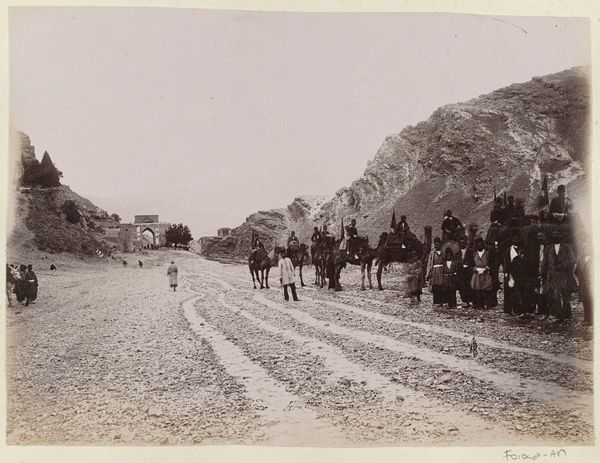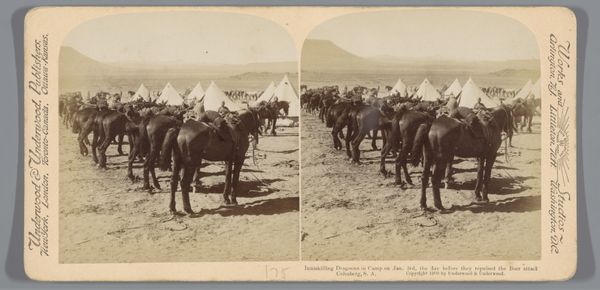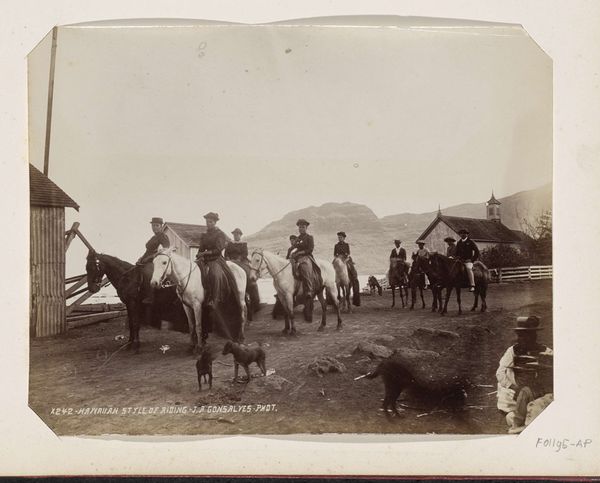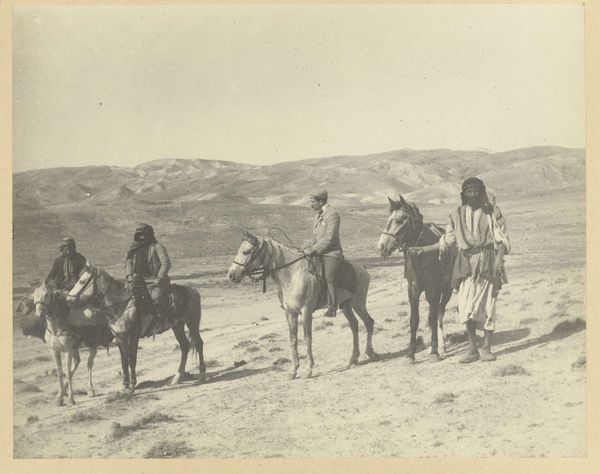
Karavanen in de Bekavallei onderweg naar Baalbek, Libanon en Palmyra, Syrië 1898
0:00
0:00
photography
#
water colours
#
landscape
#
photography
#
orientalism
#
19th century
Dimensions: height 83 mm, width 106 mm
Copyright: Rijks Museum: Open Domain
Curator: This albumen silver print, taken around 1898, captures a caravan's journey through the Bekaa Valley towards Baalbek in Lebanon and Palmyra in Syria. Johannes Lodewijk Heldring was behind the lens for this work. Editor: It has a dreamy, faded quality. Like looking at a memory through layers of time and sepia. The figures are small, but they appear against a very big and expansive landscape. The eye travels forever, always forward with this caravan. Curator: It certainly evokes that feeling. Heldring's work often places these figures within the frame of a colonial gaze, one seeking to document and almost exoticize these cultures for a Western audience. What do you notice about the composition in that light? Editor: Well, there’s a sense of both order and constraint. Everything is moving from left to right along this one strict, straight path that is provided through the valley, but simultaneously constrained by the edges of the photograph, boxed in by the European style. This feels like it echoes what you just mentioned, this perspective from afar that at once romanticizes yet confines. Curator: Exactly, and that ties into the Orientalist style prominent during this time. There's a romanticized portrayal of the "exotic" East. This caravan is placed in this long lineage of European art that fetishizes foreign people and lands. Editor: What does this journey signify? I feel that their path and progress have relevance to that wider, philosophical framing. Curator: That's a very important consideration. Historically, the Bekaa Valley has always been a trade route. Seeing it through this photograph, especially given when it was taken, frames it not just as transit of goods but the complicated dynamics of imperial movement, too. It can even encourage discussions around agency, and power, given Heldring's context. Editor: Looking again, that pathway cuts quite dramatically through the image. Perhaps that division is quite fitting for discussing all these intersecting historical tensions, like we are doing now. The photo and its subjects are framed by such forces. Curator: Precisely. Heldring's photograph provides a potent visual document, though definitely not a neutral one. Editor: Right. You have really nudged me towards seeing the weightier conversations here, rather than just feeling wistful about its antique tones.
Comments
No comments
Be the first to comment and join the conversation on the ultimate creative platform.
